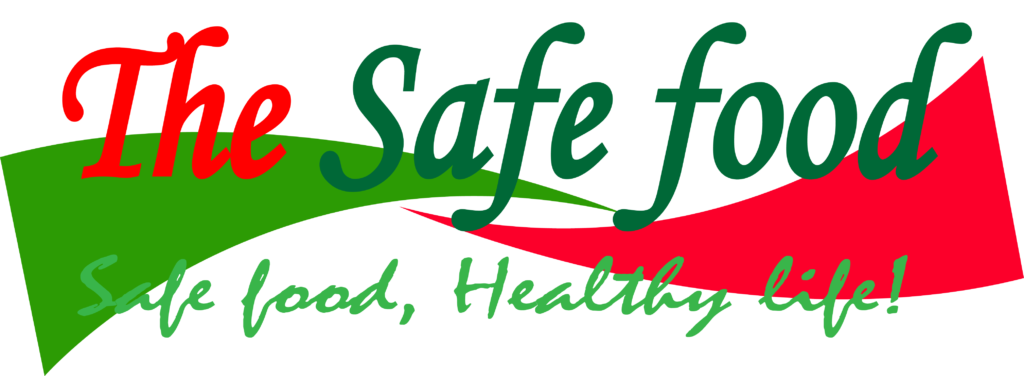Highlights:
10 steps to starting E-commerce business in the food Industry
The following are the 10 steps to starting E-commerce business in the food Industry:
- Market assessment
- Defining your niche
- Developing a business plan
- Determining the legal requirements
- Identifying suppliers
- Build an e-commerce website
- Sourcing raw materials and packaging
- Developing a shipping strategy
- Developing a marketing strategy
- Testing and iteration

What is the meaning of E-Commerce?
Starting an e-commerce business in the food industry can be a challenging but rewarding endeavor. E-commerce is the buying and selling of goods and services online, using the internet as the main platform for transactions. It has revolutionized the way businesses operate, providing a more efficient and cost-effective method of conducting business.
E-commerce has enabled businesses to expand their reach to customers from all over the world, allowing them to offer their products and services in a much wider market. With e-commerce, businesses can also benefit from faster delivery times and lower costs associated with traditional brick-and-mortar stores.
How Can E-Commerce Help Your Food Business?
As the food industry continues to grow, e-commerce has become an increasingly important tool for food businesses. E-commerce can help you reach more customers, increase sales, and improve customer service.
It also allows you to optimize your operations by streamlining processes and reducing costs. With the right strategy, e-commerce can be a powerful tool for your food business. In this article, we’ll discuss how you can use e-commerce to help your food business succeed.
E-commerce can offer several benefits to a food business, including:
- Increased reach: By selling food products online, a food business can reach a wider audience beyond its physical location. This can help to increase sales and revenue.
- Convenience: Customers can order food products online at their convenience, and have them delivered directly to their doorstep. This can help to increase customer satisfaction and loyalty.
- Lower overhead costs: E-commerce can help food businesses to reduce overhead costs, such as rent for a physical storefront, utilities, and staffing. This can help to improve profitability.
- Enhanced customer experience: E-commerce can provide customers with a seamless shopping experience, from browsing products to making payments and receiving their orders. This can help to enhance customer satisfaction and increase repeat business.
- Better inventory management: With e-commerce, food businesses can better manage their inventory and reduce waste by tracking real-time sales data and adjusting their stock levels accordingly.
- Opportunity for personalized marketing: E-commerce platforms offer various features that allow food businesses to collect customer data and target personalized marketing campaigns based on their purchase history and preferences.
Overall, e-commerce can help food businesses to improve their sales, customer experience, and profitability, while also reducing overhead costs and improving inventory management.
Steps to Take Before Starting an E-Commerce Food Business
Before starting an e-commerce business in the food industry, it’s important to take the following steps:
- Market assessment: Assess the market potential and determine if there is a need for your product or service in the current market.
- Define your niche: Decide what type of food products you want to sell online and identify your target market. Research your competitors and determine what sets your business apart.
- Develop a business plan: Create a business plan that outlines your goals, marketing strategies, financial projections, and other important details.
- Determine legal requirements: Research the legal requirements for selling food products online in your state or country. This may include obtaining necessary licenses and permits, and complying with food safety regulations.
- Identify suppliers: Identify potential suppliers and develop relationships with them to ensure that you have access to quality ingredients at competitive prices.
- Build an e-commerce website: Build an e-commerce website or use an existing platform to sell your food products online. Ensure that the website is user-friendly, secure, and offers multiple payment options.
- Source ingredients and packaging: Determine where you will source your ingredients and packaging materials. Ensure that they meet all food safety regulations and are of high quality.
- Develop a shipping strategy: Determine how you will package and ship your food products to customers. Consider factors such as shipping costs, delivery times, and packaging materials.
- Develop a marketing strategy: Develop a marketing strategy to promote your e-commerce food business. This may include social media marketing, email marketing, paid advertising, and other tactics to drive traffic to your website.
- Test and iterate: Test your e-commerce website and marketing strategies to identify areas for improvement. Continuously iterate and improve your business to optimize its performance and meet the needs of your customers.
By taking these steps, you can set yourself up for success in launching and growing an e-commerce food business.
Creating a Winning Strategy for Your Online Food Business
Creating a winning strategy for your online food business involves several key steps:
- Identify your target market: Determine who your ideal customers are and what they want. Consider factors such as age, location, income, and lifestyle. All these factors will influence the success of your E-commerce business in the food industry.
- Develop a unique selling proposition: Determine what sets your online food business apart from the competition. Develop a unique selling proposition (USP) that communicates your unique value proposition to customers.
- Set clear goals: Establish clear, measurable goals for your online food business. This may include sales targets, customer acquisition goals, or other performance metrics.
- Develop a marketing plan: Develop a comprehensive marketing plan to promote your online food business. Consider tactics such as social media marketing, email marketing, paid advertising, and influencer marketing.
- Optimize your website for conversions: Ensure that your website is optimized for conversions. This includes making it easy for customers to find and purchase your food products, as well as providing a seamless checkout process.
- Offer exceptional customer service: Offer exceptional customer service to ensure that your customers are satisfied with their purchases. This includes providing prompt and helpful customer support, as well as addressing any complaints or issues in a timely manner.
- Continuously monitor and optimize: Continuously monitor and optimize your online food business to improve performance. Use data and analytics to track key metrics and identify areas for improvement.
By following these steps, you can develop a winning strategy for your online food business that attracts and retains customers, drives sales, and helps you achieve your business goals.
Food safety knowledge is for all!

Every consumer deserves to have high quality and safe food. …Read more!

Building a Strong Brand Presence for Your Online Food Store
Building a strong brand presence for your online food store is essential for attracting and retaining customers. With the right strategies and tactics, you can create an unforgettable customer experience that will keep them coming back for more.
By leveraging digital marketing techniques such as SEO, social media, and email campaigns, when starting an e-commerce business in the food industry, you can build a strong brand presence and make sure your customers have access to the best products and services.
Additionally, by utilizing AI tools such as chatbots and AI-powered content generation systems, you can create a more personalized customer experience that will help your E-commerce business in the food industry to stand out from the competition. With these strategies in place, your online food store will be on its way to becoming an industry leader. Here are some steps you can take to build a strong brand presence:
- Develop a unique brand identity: Develop a unique brand identity that reflects your values, mission, and personality. This may include a memorable logo, color scheme, and tone of voice.
- Create a compelling brand story: Develop a compelling brand story that resonates with your target audience. This should communicate your brand’s purpose and why it matters to your customers.
- Optimize your website: Optimize your website to reflect your brand identity. This includes using your brand colors and imagery, as well as creating a user-friendly and visually appealing website.
- Use social media: Use social media to build brand awareness and engage with your customers. Use social media platforms that are relevant to your target audience and create content that is aligned with your brand identity.
- Offer high-quality products: Offer high-quality food products that meet the expectations of your customers. Ensure that your products are fresh, delicious, and delivered in a timely manner.
- Provide exceptional customer service: Provide exceptional customer service to ensure that your customers are satisfied with their purchases. This includes responding to inquiries promptly, addressing any issues or complaints, and going above and beyond to exceed customer expectations.
- Build partnerships: Build partnerships with other businesses and influencers in your industry to expand your reach and build credibility for your brand.
- Digital marketing techniques such as SEO, social media, and email campaigns: These are crucial for building a strong brand presence and driving traffic to your online food store. Here are some ways you can leverage these techniques:
- Search Engine Optimization (SEO): Optimize your website for search engines by using relevant keywords and creating high-quality content that attracts organic traffic. This will help your website rank higher in search engine results pages, making it easier for customers to find your online food store.
- Social media: Use social media platforms such as Facebook, Instagram, and Twitter to build brand awareness, engage with your customers, and promote your food products. Create compelling content that aligns with your brand identity and resonates with your target audience.
- Email campaigns: Use email campaigns to nurture your leads and build relationships with your customers. Send targeted emails that provide value to your customers, such as promotions, product updates, and recipe ideas.
- Influencer marketing: Leverage influencer marketing to reach a wider audience and build credibility for your brand. Partner with influencers in your industry who align with your brand values and can promote your food products to their followers.
- Retargeting ads: Use retargeting ads to reach customers who have visited your website but did not make a purchase. This will help you stay top-of-mind with these customers and encourage them to come back and make a purchase.
By following these steps, you can build a strong brand presence for your online food store that resonates with your customers, builds trust, and drives sales.
Developing an Effective & Convenient Online Payment System
Online payment systems have revolutionized the way people make payments today. With the rise of e-commerce and digital transactions, it has become increasingly important for businesses to develop an effective and convenient online payment system. This system should be secure, reliable, and easy to use for customers.
It should also provide a range of options for customers to choose from when making payments. With the help of modern technologies such as blockchain, biometrics, and artificial intelligence, businesses can create a payment system that is both secure and efficient. Here are some steps you can take to develop an effective and convenient online payment system:
- Offer multiple payment options: Offer multiple payment options to your customers, such as credit cards, debit cards, PayPal, and other digital wallets. This will ensure that your customers can choose the payment method that is most convenient for them.
- Ensure security: Ensure that your online payment system is secure and compliant with industry standards, such as Payment Card Industry Data Security Standard (PCI DSS) and General Data Protection Regulation (GDPR). This will help protect your customers’ sensitive financial information and build trust in your brand.
- Make the checkout process easy: Make the checkout process as easy as possible for your customers. This includes minimizing the number of steps required to complete a purchase, offering a guest checkout option, and providing clear instructions for entering payment information.
- Consider mobile payments: Consider offering mobile payment options, such as Apple Pay or Google Pay, to make it even more convenient for customers to pay for their orders.
- Provide customer support: Provide customer support to assist customers with any payment-related issues or concerns. This includes offering multiple channels for customer support, such as email, phone, and chat support.
- Test and optimize: Continuously test and optimize your online payment system to ensure that it is delivering the best possible user experience. This includes monitoring conversion rates, analyzing user behavior, and making adjustments to improve the checkout process.
By following these steps, you can develop an effective and convenient online payment system that makes it easy for your customers to pay for their orders and helps drive sales for your online food business.
Types of online payment systems available for businesses
There are several types of online payment systems available for E-commerce business in the food industry, including:
- Credit and debit card payments: This is a popular online payment method that allows customers to make payments using their credit or debit cards. Businesses need to have a merchant account with a bank or payment processor to accept credit and debit card payments.
- Digital wallets: Digital wallets are a payment method that allows customers to store their payment information in a digital format. Examples of digital wallets include PayPal, Apple Pay, Google Pay, and others.
- Bank transfers: Bank transfers allow customers to transfer funds from their bank account to the business’s account. This payment method requires customers to have an online banking account.
- E-checks: E-checks are digital versions of traditional paper checks that allow customers to make payments online.
- Cryptocurrency: Cryptocurrency is a digital currency that uses blockchain technology to process payments. Examples of cryptocurrencies include Bitcoin, Ethereum, and Litecoin.
- Payment gateways: Payment gateways are online services that process payments and authorize transactions. Examples of payment gateways include PayPal, Stripe, and Authorize.net.
- Mobile payments: Mobile payments use mobile devices to process payments. Examples of mobile payment methods include QR code payments, NFC payments, and SMS payments.
By offering multiple online payment options, businesses can provide a convenient and secure payment experience to their customers, which can help increase customer satisfaction and loyalty.
Examples of online payment systems
Here are some examples of convenient online payment systems that can be used when starting an e-commerce business in the food industry:
- PayPal: PayPal is a widely used digital payment system that allows customers to pay securely and conveniently using their credit or debit cards, bank accounts, or PayPal balance.
- Stripe: Stripe is a payment processing platform that enables businesses to accept payments online. It supports multiple payment methods, including credit and debit cards, Apple Pay, and Google Pay.
- Square: Square is a popular payment processing system that allows businesses to accept payments online, in-store, or on-the-go. It offers features such as invoicing, recurring payments, and a virtual terminal for phone and mail orders.
- Braintree: Braintree is a payment processing platform owned by PayPal that offers features such as recurring billing, fraud protection, and support for multiple payment methods.
- Amazon Pay: Amazon Pay is a payment system that allows customers to pay using their Amazon account information. It offers features such as one-click checkout and mobile-optimized payment pages.
- Authorize.net: Authorize.net is a payment gateway that enables businesses to accept credit and debit card payments online. It offers features such as fraud detection, recurring billing, and a virtual terminal for phone and mail orders.
By choosing a convenient online payment system that fits your business needs, you can offer a smooth and hassle-free payment experience to your customers, which can help drive sales and build customer loyalty. You must do your research to identify the payment system that best fits your business.
You can also watch instead of reading!
Our Blog ↗
Read the latest from our blog
Ask a Question ↗
Ask a question and get answers from our community
Give Feedback ↗
We value your feedback.


